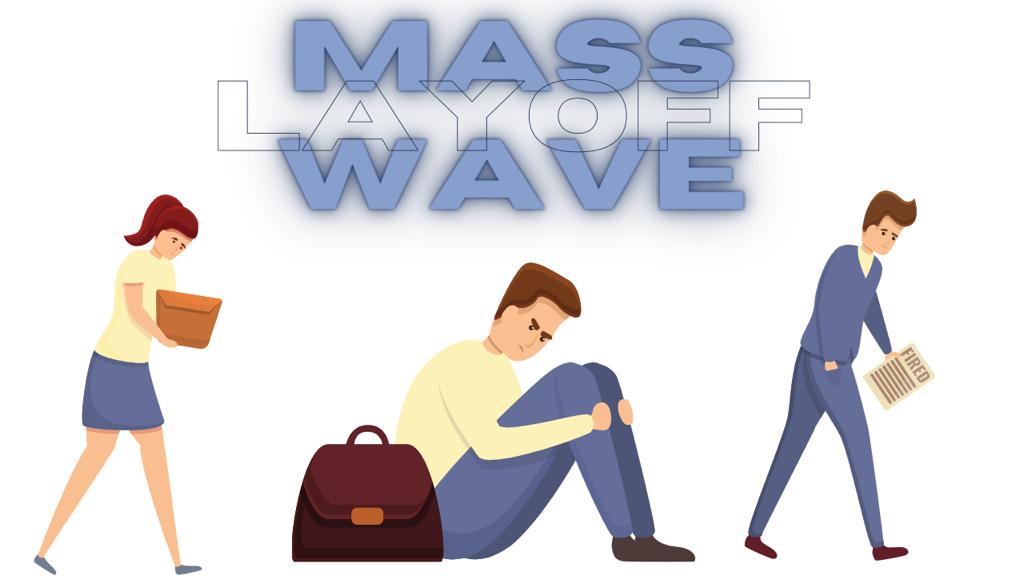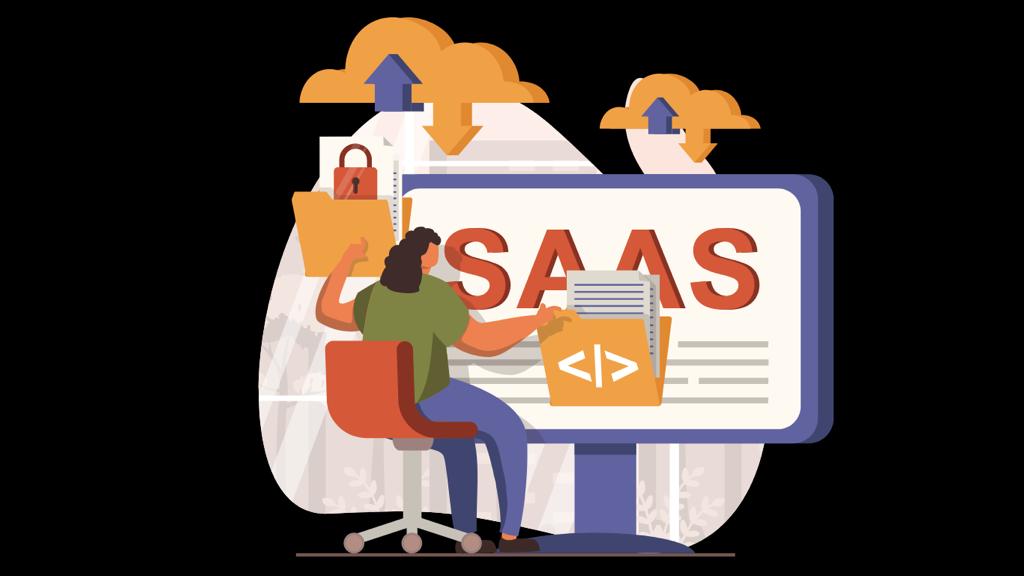
Total current tech layoffs is 219,709 in 2023
There are more and more reports about the mass layoff in major tech giants to startups. Majorly these layoffs have happened in biggest tech names such as Google, Amazon, Microsoft, Meta, Yahoo & Zoom. Startups have also announced layoffs across sectors from SaaS to Crypto.
Current total of layoffs for 2023 is 219,709, according to Layoffs.fyi. Tech layoffs this year so far exceeds the total number of tech layoffs in 2022.
- January 2023: 84,714 employees laid off
- February 2023: 36,491 employees laid off
- March 2023: 37,109 employees laid off
- April 2023: 17,926 employees laid off
- May 2023: 14,555 employees laid off
- June 2023: 10,524 employees laid off
1. Who has made mass layoffs, and how many?
Over 1,50,000 jobs were lost in the industry alone in 2022, and over 219,709 more have been announced since the year. Four of the major U.S. internet companies—Alphabet, the parent company of Google, Amazon, Microsoft, and Facebook owner Meta—made 51,000 of the total recorded tech mass layoffs during the past six months.
1.1. Meta:
Last year in November, Meta Platforms, a company that owns Facebook, reported that it had lost more than 11,000 positions or 13% of its workforce. In Meta’s 18 years of existence, the mass layoffs were a first.
1.2. Microsoft:
The Washington-based IT company founded by Bill Gates said it would reduce 10,000 jobs, or less than 5% of its workforce, by March 2023 and record a $1.2 billion charge to earnings in the process.
1.3. Amazon:
In early January, the e-commerce, cloud computing, and streaming juggernaut Amazon announced it would eliminate 18,000 jobs, or 6% of its workforce, through company-wide mass layoffs. Amazon is also America’s second-largest private employer after Walmart.
1.4. Google:
On January 20, Alphabet, the parent company of Google, said that it would be mass laying off 12,000 employees, or 6% of its workforce, in a memo to staff.
1.5. Spotify:
Spotify is a music-streaming service. Daniel Ek, the CEO of Spotify, informed all employees in a memo that the firm would eliminate 600 jobs or 6% of its global workforce.
1.6. Salesforce:
On January 4, the software corporation with its headquarters in San Francisco stated that it was closing several offices and eliminating 10% of its workforce.
1.7. Twitter:
Following Elon Musk’s $44 billion acquisition of Tesla, the social media company Twitter Inc. aggressively reduced jobs, firing 3,700 people, or almost half of its personnel, across several divisions including product, engineering, communications, and content curation.
1.8. Others:
Cisco, a provider of networking and collaboration technologies, announced in November that it would restructure and lay off 5% of its staff. HP, a manufacturer of computers, also declared it would make up to 6,000 cuts by the end of its fiscal year 2025.
2. Mass layoffs among white-collar workers are a ripple, not a wave.
Although these job losses are unexpected and undoubtedly disruptive for the affected individuals. Analysts claim that they do not represent a tsunami of job losses that would indicate a recession. According to Nela Richardson, chief economist of ADP, “we’re not in a recession yet” and might not recognise it until it’s finished.
At 3.5%, the national unemployment rate is still low, and the number of layoffs each month is close to a record low (less than 1%). Last month, the gross domestic product grew more than anticipated. Additionally, in the past week, the number of people filing for unemployment benefits fell by 6,000, to 186,000. That figure averaged roughly 200,000 people seeking assistance each week before the outbreak.

According to Richardson, IT businesses may be “pruning” their workforces, but they are also making investments in the development of cutting-edge technology and, consequently, workforces. Consider Microsoft, which this month stated it was laying off 10,000 employees, ended up revealing a multi-billion-dollar investment in OpenAI, the company that makes ChatGPT.
2.1. Tech is on edge
Richardson claims that “tech is on edge,” but if laid-off workers run out of severance and start applying for unemployment benefits in droves. For several months, we might not see the true impact on the wider labour market.
For business clients of WLC, finding qualified labour is still the biggest challenge. WLC specifically assists clients by providing qualified software engineers across various technologies.
Employers in the white-collar sector might be making the same mistakes as those in the leisure, hospitality, and service industries who laid off people during the economic downturn only to have a skill shortage when the economy recovered. The labour market has entered a new phase where workers might not be available when you need them.
3. Manufacturing mass layoffs wave might indicate a recession.
According to The Wall Street Journal, employers fired 110,800 contract workers in the final five months of 2022, with 35,000 of those terminations occurring in December. The biggest single-month reduction since early 2021.
3.1. Recession for few
Even if the United States officially enters a recession, “it’ll be the weirdest one ever, starting with a 3.5% unemployment rate and where consumers, on the whole, are in good shape and incomes have improved,” according to one economist. According to Richardson, it will be a different kind of recession than the one we are currently aware of. One that is “mainly fueled by inflation and increased interest rates.” The United States is more likely to have stagflation, sometimes known as an “anaemic economy” with sustained inflation. Stagflation, in contrast with a recession, in which the economy contracts, reaches a low point, and then recovers.
Stagflation occurs when the Fed raises rates and then maintains them there while inflation moderates but doesn’t reach the Fed’s target of 2%. This is in contrast to a recession, which sees the economy contract, reaches a low point, and then recover. Stagflation prevents people from seeing the end of the tunnel, which might lead to slow growth, according to Richardson. “We’re seated in the muddled centre.”

4. Are mass layoffs bad for investors?
Mass layoffs aren’t always a sign that the tech industry is doomed. Although most people’s initial reaction to news about them is negative. Instead, as it advances the technological envelope, the sector is likely to keep changing. Technology will probably continue to be a sensible investment for many portfolios. Notwithstanding the possibility that certain companies will become winners or losers. Identifying the winning companies will be the key problem. Although it’s hard to foretell the future, keeping a close eye on the market may help you make the best decisions for your portfolio.
5. Tech companies & mass layoffs: What’s the prognosis?
We may safely state that we are dealing with a volatile market. This negative trend is spreading like wildfire. But what will occur after that? One thing is certain: investors in both the public and private markets will alter their strategy and the factors they consider important. They will therefore begin to value good cash flow and profitability as the essential drivers rather than rapid growth.
However, none of the specialists consistently predicts an impending catastrophe. And by all accounts and indications, the tech industry will endure and thrive. Yes, the going is a little rough right now. It will also give you a headache or two in the coming months. But it’s not at all terrifying.
Conclusion on mass layoff wave
It will be vital to recognise that employees’ loyalties will change over this period. These tech behemoths will face fierce new competition, which will be difficult. Disgruntled workers can be observed looking for solace in startups that are much more adaptable and tolerant than the industry’s IT behemoths.
The fact that many renowned companies in Silicon Valley were founded through numerous low markets is supported by history. The best example of this, which debuted in 1998, is Google. This came about as a result of bizarre job market conditions in the past, and history may repeat itself in the present dire position. The only difference between the previous ends and the new beginning is the addition of a new volume to that legacy by the recent layoffs. If talent layoff realizes its potential, the economy may soon witness the emergence of new businesses that will be beneficial to the sector.
If you found this blog post informative, we encourage you to continue exploring the exciting worlds of technology. CLICK HERE to connect with like-minded individuals through messages and dive deeper into the latest developments in these fields.




